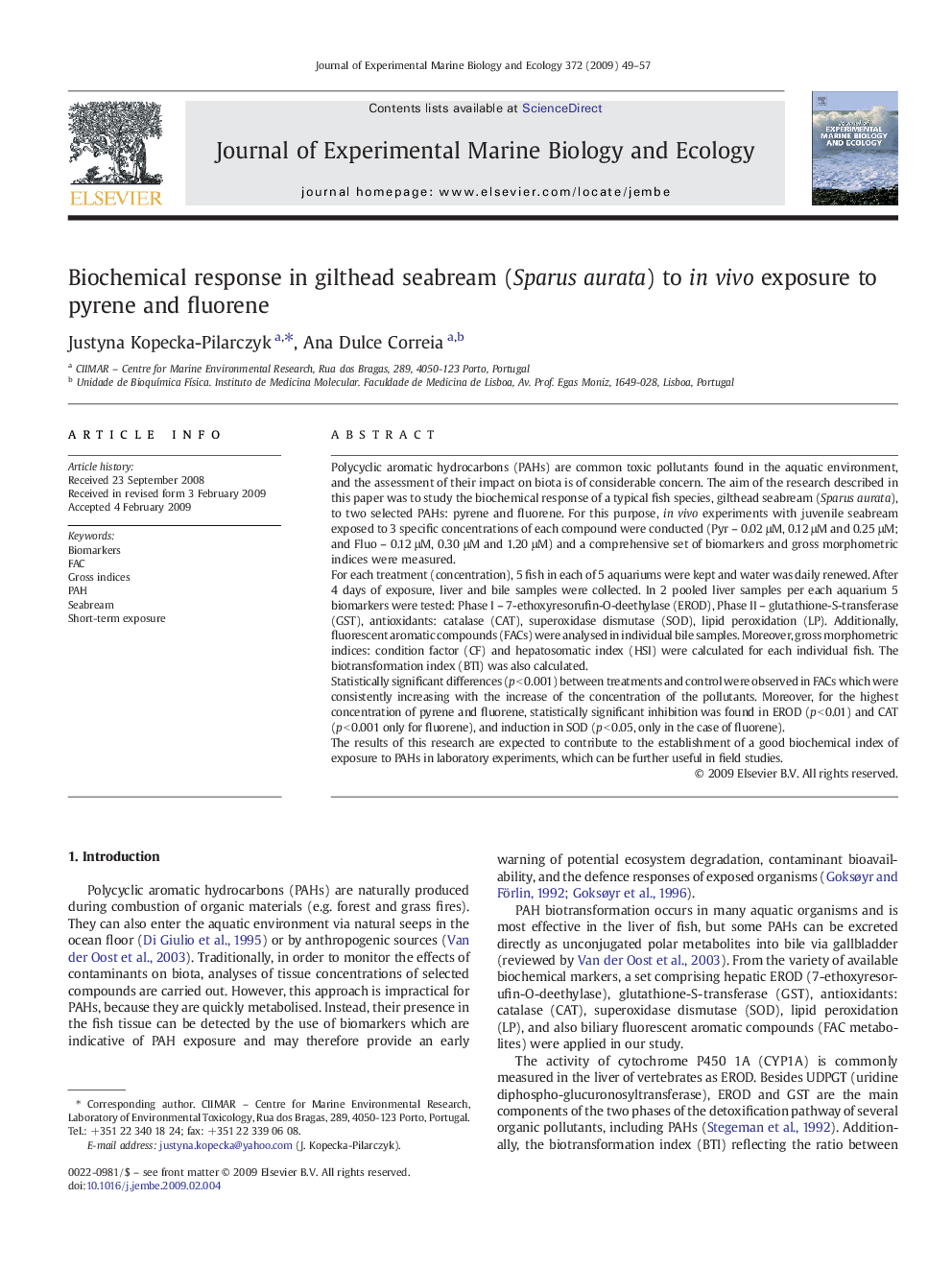| Article ID | Journal | Published Year | Pages | File Type |
|---|---|---|---|---|
| 4396995 | Journal of Experimental Marine Biology and Ecology | 2009 | 9 Pages |
Polycyclic aromatic hydrocarbons (PAHs) are common toxic pollutants found in the aquatic environment, and the assessment of their impact on biota is of considerable concern. The aim of the research described in this paper was to study the biochemical response of a typical fish species, gilthead seabream (Sparus aurata), to two selected PAHs: pyrene and fluorene. For this purpose, in vivo experiments with juvenile seabream exposed to 3 specific concentrations of each compound were conducted (Pyr – 0.02 μM, 0.12 μM and 0.25 μM; and Fluo – 0.12 μM, 0.30 μM and 1.20 μM) and a comprehensive set of biomarkers and gross morphometric indices were measured.For each treatment (concentration), 5 fish in each of 5 aquariums were kept and water was daily renewed. After 4 days of exposure, liver and bile samples were collected. In 2 pooled liver samples per each aquarium 5 biomarkers were tested: Phase I – 7-ethoxyresorufin-O-deethylase (EROD), Phase II – glutathione-S-transferase (GST), antioxidants: catalase (CAT), superoxidase dismutase (SOD), lipid peroxidation (LP). Additionally, fluorescent aromatic compounds (FACs) were analysed in individual bile samples. Moreover, gross morphometric indices: condition factor (CF) and hepatosomatic index (HSI) were calculated for each individual fish. The biotransformation index (BTI) was also calculated.Statistically significant differences (p < 0.001) between treatments and control were observed in FACs which were consistently increasing with the increase of the concentration of the pollutants. Moreover, for the highest concentration of pyrene and fluorene, statistically significant inhibition was found in EROD (p < 0.01) and CAT (p < 0.001 only for fluorene), and induction in SOD (p < 0.05, only in the case of fluorene).The results of this research are expected to contribute to the establishment of a good biochemical index of exposure to PAHs in laboratory experiments, which can be further useful in field studies.
